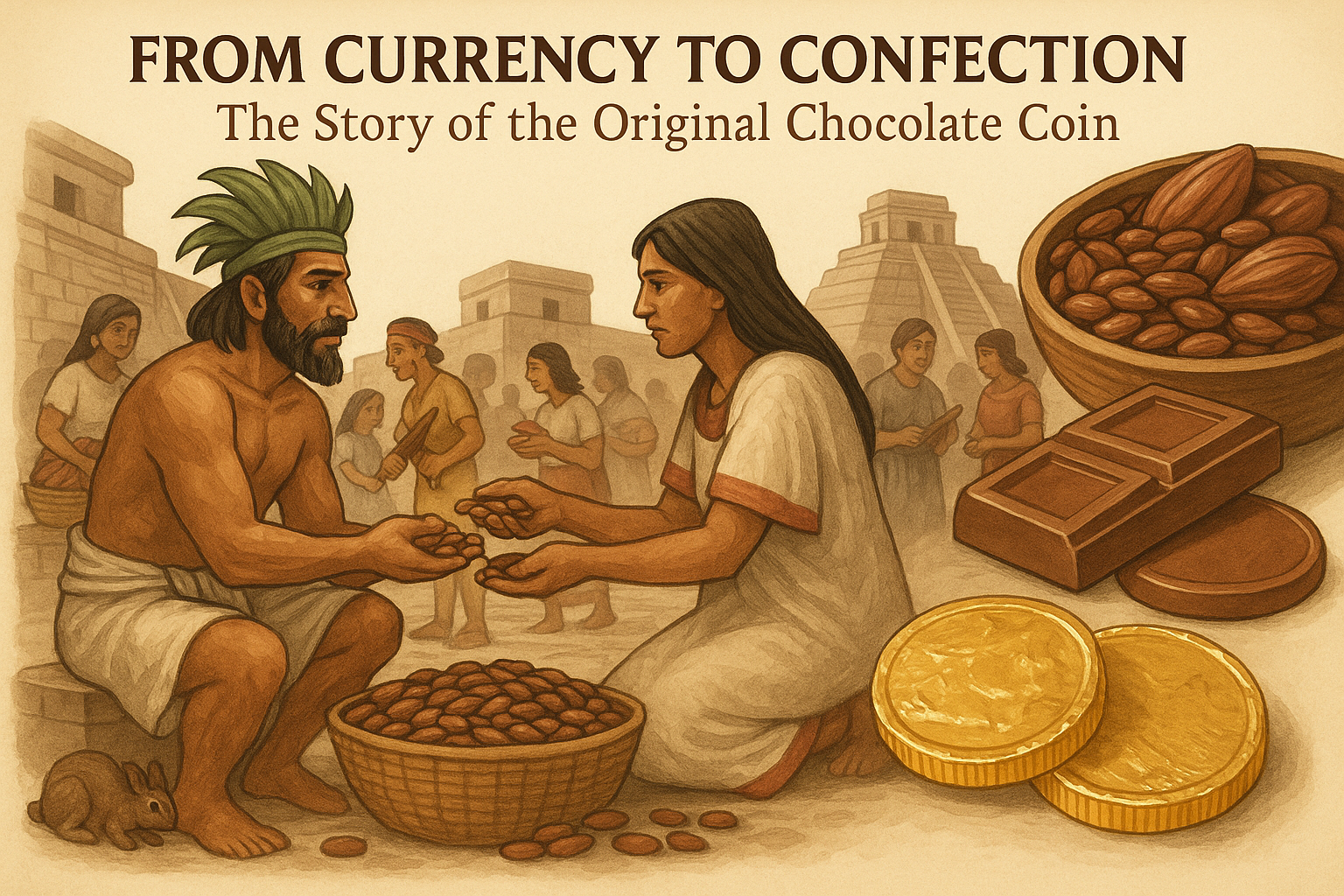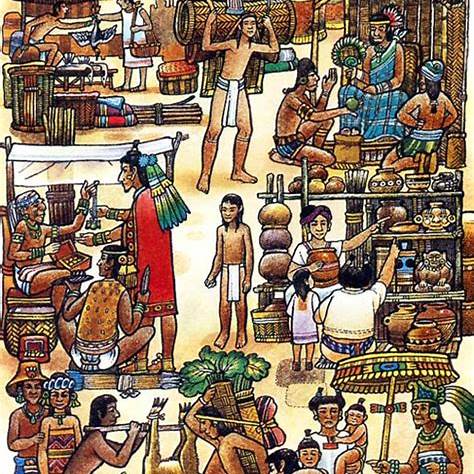 Before chocolate coins jingled in Christmas stockings or melted into mugs, they held real value — economic value. Literal currency, in fact.
Before chocolate coins jingled in Christmas stockings or melted into mugs, they held real value — economic value. Literal currency, in fact.
It’s easy to forget, in a world of foiled treats and supermarket shelves, that chocolate wasn’t always the sweet indulgence we know today. In ancient Mesoamerica — long before the first European ever tasted a truffle — the cocoa bean was nothing short of sacred. And not just in a spiritual sense. Cocoa beans were used as money.
Yes, really.
The Price of a Rabbit (and a Wife)
In the bustling marketplaces of the Maya and Aztec civilisations, cacao wasn’t just for drinking — it fuelled economies.
A rabbit? That’ll be ten beans.
A courtesan? Eight to ten. Or perhaps, depending on the deal, a wife.
A healthy slave? One hundred.
A carga — that’s 24,000 beans, the load a man could carry — was used for serious trade.
As for a husband? Well… probably free. Men were plentiful. A good wife, however — creative, capable, and skilled in the home or marketplace — might set you back a good handful of cocoa beans. Supply and demand, even then.
A Fragrant Foundation for Empire
These weren’t just bartering tools. Cocoa beans were used to pay taxes, salaries, and tribute to rulers. They helped forge alliances, secure marriages, and grease the wheels of political power. Cocoa was wealth you could drink, store, and carry.
The beans were so valuable, in fact, that alongside obsidian blades and copper axe money, they formed the backbone of currency in a complex and advanced trade system. Imagine our modern economy underpinned not by digits on a screen, but by a crop that had to be planted, grown, fermented, dried, and sorted — by hand. No wonder it was precious.
And where there’s money, there’s mischief.
The First Counterfeiters
Some cheeky traders figured out how to hollow out cocoa beans and fill them with dirt or crushed avocado pits. Counterfeiting was alive and well in the Aztec Empire. Even then, people tried to game the system. It’s oddly comforting to know that food fraud has ancient roots.
Chocolate and Matrimony: A Lasting Legacy
Even today, some of these ancient customs echo through time. In parts of Spain and Latin America, chocolate cakes are given at weddings — a sweet symbol of prosperity and affection. It’s a nod to the tradition of cocoa as bride-price, as dowry, as dowry and devotion rolled into one.
It’s romantic, in a way. A reminder that what we now call confectionery once carried the weight of survival, love, and economic power.
From Coin to Treat
So next time you unwrap a foil-wrapped chocolate coin or savour a luxurious ganache, remember: you’re not just indulging in a treat — you’re tasting a story thousands of years in the making.
As a chocolate consultant and flavour historian, I often share this tale at tastings and events. Because understanding chocolate isn’t just about cocoa percentages or tasting notes. It’s about context. About people. About culture. It’s about the deep, fragrant roots of trade, power, and celebration.
Chocolate has always been more than food.
It was currency. It was ceremony.
And today, it’s connection — from the ancient marketplaces of Mesoamerica to your kitchen table.
Interesting Fact
The Maya number system was vigesimal — based on 20 instead of 10. That’s why a carga was 24,000 beans: the equivalent of 20 × 20 × 60. It’s a brilliant reminder that even ancient bean-counting was cleverer than we often give credit for.
Share the Story
This piece is part of my ongoing series exploring the untold histories of chocolate — where every nib, truffle, and coin has a past. If you’d like me to bring this story to your event, school, or chocolate tasting, get in touch at www.coeurdexocolat.com.
